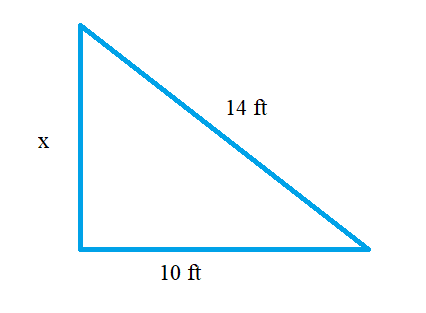Which of the following is the length of the unknown leg of a right triangle that has one leg length of 10 feet and a hypotenuse of 14 feet? (Round to the nearest tenth.)
A. 6 feet
B. 15.6 feet
C. 9.8 feet
D. 20 feet
The sides of a right-angled triangle are determined by the Pythagoras theorem. If we let the unknown side to x as in the figure below, then theory is applied as follows.

The value of x is found as:


The value of the unknown leg side of a triangle is about 9.8 feet.
Therefore, the Correct Answer is C.






